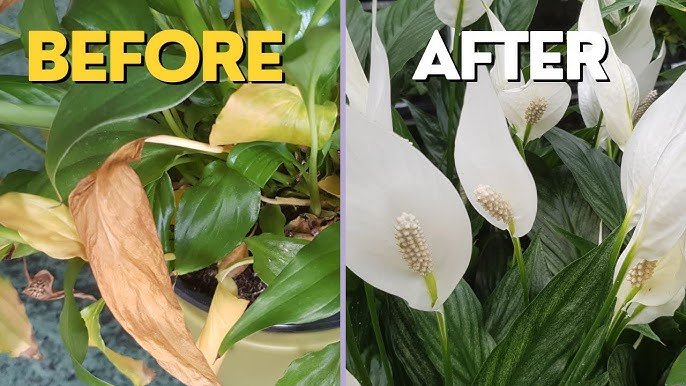The spathiphyllum, also known as the peace lily, is indeed a popular and beautiful indoor plant. Proper care ensures it thrives and produces its characteristic white, fragrant flowers. Here are some key tips for caring for a spathiphyllum:
- Light: Spathiphyllum prefers bright, indirect light. Avoid exposing it to direct sunlight, as this can scorch the leaves. Inadequate light can lead to fewer flowers and slower growth.
- Watering: Keep the soil consistently moist but not waterlogged. Allow the top inch or so of the soil to dry out before watering again. Yellow leaves can indicate overwatering, while drooping leaves may be a sign of underwatering.
- Humidity: Spathiphyllums thrive in high humidity. Consider placing a humidity tray filled with water and pebbles near the plant or use a humidifier if the air is dry.
- Temperature: Keep the room temperature between 65-80°F (18-27°C). Avoid exposing the plant to drafts or temperature extremes.
- Fertilizing: Use a balanced, water-soluble fertilizer diluted to half-strength and feed the plant every 6-8 weeks during the growing season (spring and summer). Reduce fertilization during the dormant period in fall and winter.
- Repotting: Repot your spathiphyllum when it becomes root-bound or outgrows its container. Typically, this is needed every 1-2 years. Use a slightly larger pot with fresh potting mix.
- Cleaning: Dust the leaves regularly with a damp cloth to allow for proper photosynthesis. Clean leaves also discourage pests.
- Pruning: Remove any dead or yellowing leaves promptly. This helps improve the overall appearance of the plant.
Regarding the homemade fertilizers you mentioned:
- Rusty nails: This provides iron to the plant, which can help if you notice yellowing leaves. Iron deficiency can lead to chlorosis (yellowing), and rusty nails provide a source of iron.
- Coffee and onion solution: This can potentially promote flowering, as the acidity of coffee grounds may benefit the plant. Onion peels might contribute to the nutrient mix.
- Milk solution: Milk provides calcium and other nutrients that can benefit plant growth.
While these homemade solutions may have some benefits, it’s essential to use them in moderation and not over-fertilize your spathiphyllum. Over-fertilization can harm the plant. Always monitor your plant’s health and adjust care accordingly.
Lastly, keep an eye out for common issues like spider mites and fungal diseases. Regularly inspect your spathiphyllum for any signs of trouble and take appropriate measures if needed.

